MXA RACE TEST: 2017 KTM 125SX: THE LITTLE BIKE THAT COULD
Click on images to enlarge
Q: FIRST AND FOREMOST, IS THE 2017 KTM 125SX BETTER THAN THE 2016 KTM 125SX?
A: With KTM building the 125SX new from the ground up in 2016, only small refinements were made to the 2017 model. With the 125SX engine and chassis package already at the top of its class, KTM focused its attention where it was needed most—the forks. The 2016 WP 4CS forks were the weak link in the KTM’s armor. Not anymore! The new WP 48mm AER air forks are now a strength. This makes the 125SX a compete package for 2017, and thus better than the 2016 model.
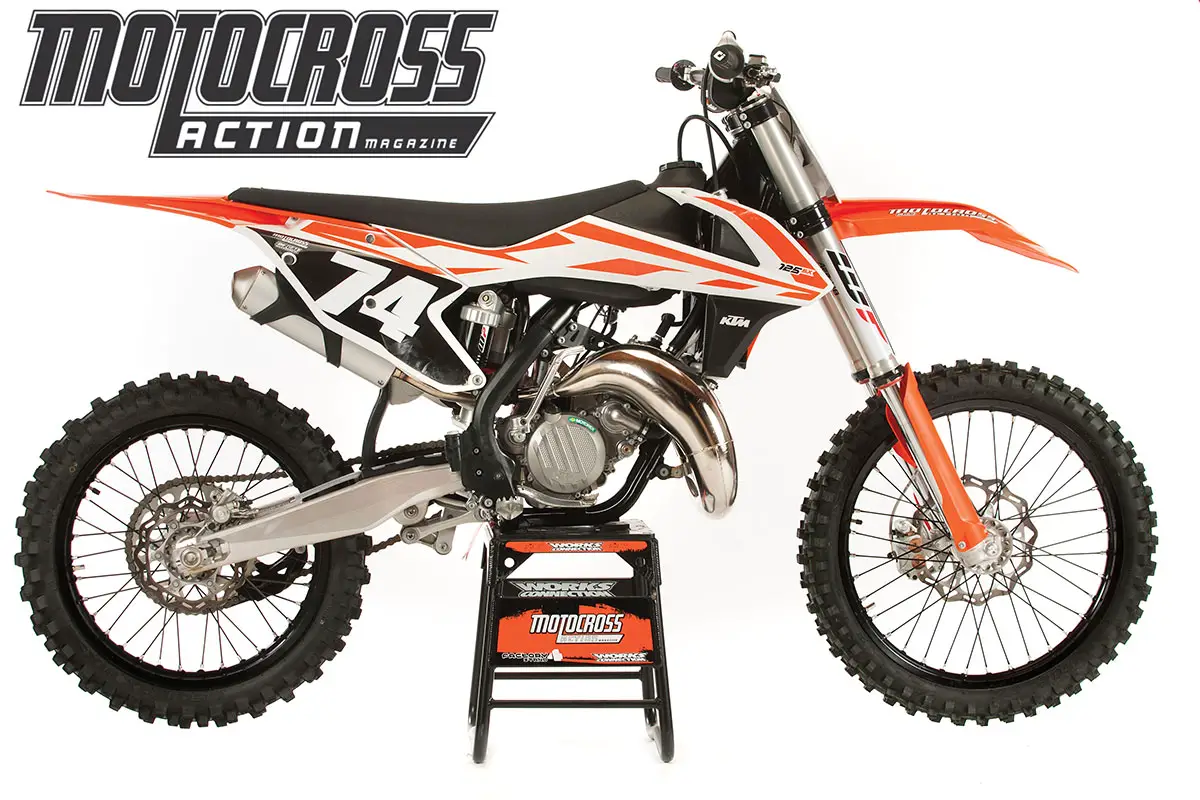
Q: HOW MUCH DOES A 2017 KTM 125SX COST?
A: The 125SX has a $6899 price tag. The Husqvarna TC125 costs $6999 and the YZ125 sells for $6499.
Q: WHAT CHANGES DID KTM MAKE TO THE 2017 KTM 125SX?
A: Many of the refinements made to the KTM 125SX were also made to the entire KTM SX line, save for the ODI lock-on grips, which were implemented on the KTM four-stroke line in 2016, and a new throttle assembly.
(1) Forks. The new WP AER 48mm front forks are unique in that they feature a sophisticated air-spring design that is still extremely simple to use. The forks are 3.6 pounds lighter than the previous 4CS units. That brings the total weight of the 125SX down to 194.9 pounds.
(2) Brake pedal. For the last few years MXA has replaced the KTM brake-pedal tip with a 7602 Racing tip to extend the pedal out further. For 2017, KTM lengthened the brake pedal by 10mm.
(3) Brake pads. The rear brake pads now have a glaze over them to increase the modulation of the rear brake. The consensus was the previous rear brake was too touchy and tended to grab when it got hot. If you want brakes that stop on a dime, just put the 2016 brake pads back in. The part number is P/N 5481-3090-300.
(4) Carburetor. Although we never got a full explanation for the switch from Keihin to Mikuni (from either Keihin or KTM), the story goes that due to Keihin’s inability to meet KTM’s production needs for 2017, KTM had to explore an alternative. After a 28-year relationship, ties were severed. This is a shocker, because KTM is the largest two-stroke carburetor purchaser in the world. The switch was a financial windfall for Mikuni. The 125SX now comes with a 38mm Mikuni TMX carb.
(5) Triple clamps. To support the flex characteristics of the WP AER fork, the upper triple clamp was beefed up to increase steering-input rigidity.
(6) Bar mount. In 2016 KTM went with rubber-mounted bar mounts to reduce vibration. On the positive side, this lessened vibration. On the negative side, the bar mounts were prone to twisting in a crash. For 2017 KTM tried to address the issue by making the top bar-mount clamp a one-piece unit instead of the bottom mount, which will now be two separate pieces. It was a failed experiment. They still twist—only worse. Our solution was to run the one-piece, 2016, bottom bar mount with the one-piece, 2017, to bar mounts.
Q: HOW FAST IS THE 2017 KTM 125SX?
A: The only competition the KTM 125SX has is from its twin brother, the Husqvarna TC125. These two 125cc machines blow the Yamaha YZ125 out of the water. The two Austrian engines are the most powerful small-bore engines to ever hit the showroom floor. The KTM pumped out 37.27 horsepower with 17.35 foot-pounds of torque. These numbers are close to several 250 four-stroke engine horsepower numbers, most notably the Honda CRF250 (38.89 horsepower) and Suzuki RM-Z250 (38.35 horsepower). If you take into consideration the over-20-pound weight difference, the 125SX has chips in the pot. You heard us right: a 125cc two-stroke can still be competitive against 250 four-strokes, just as long as they don’t line up against their powerful 44-horsepower cousins, the Husqvarna FC250 and 250SXF.
Q: WHAT IS THE POWERBAND LIKE?
A: This is no average 125cc spread. It has enough pep on the bottom end to get the bike moving without having to abuse the clutch. The midrange is smooth yet powerful, with a top end that never falls off. The broad powerband makes it easy to ride.
Q: WHAT DO WE THINK OF THE MIKUNI TMX 38MM CARB?
A: We can’t say we dislike it; we just think KTM needs to figure it out before selling it ot the masses. With the Keihin PWK carb, the jetting was just about spot-on—although it took KTM more than a few years to iron out the kinks. So far this year we have tested the Mikuni on the Husqvarna TX300, Husky TC250, KTM 250SX , KTM 150Sx and now the KTM 125SX. On every bike we had to change the main or pilot jet (sometimes both). KTM includes a jet kit with each new KTM, but they didn’t always include the brass we were looking for. For the 125SX, the bottom end was super rich. It stopped us in our tracks in tight corners. We went from a 42.5 to a 25 pilot jet to clean up the bottom end. That is a huge difference. Not that it was a big deal for us to change jets; we’ve just gotten accustomed to the clean jetting of Keihin carbs.
Q: DID ADJUSTING THE POWER VALVE HELP?
A: The stock adjustment of the power valve was set at one turn in from all the way out. Our testers felt they could give up some bottom in exchange for mid- to top-end power. We adjusted the power valve in 1/4-turn increments until it got worse. At two turns in, the bike felt like a rocket ship from mid to top and pulled until the cows came home. It did take some pep off the bottom, but for our Intermediate and Pro riders, it was just what they were looking for. For our Vet and Novice riders, 1-3/4 turns in was their happy place. Going any further than two turns in would make the bottom to mid-range power sluggish.
 As far as the suspension goes, a lighter shock spring and no-spring air forks knock 4 pounds off the 2017 KTM 125SX.
As far as the suspension goes, a lighter shock spring and no-spring air forks knock 4 pounds off the 2017 KTM 125SX.
Q: HOW ARE THE WP AER FORKS COMPARED TO LAST YEAR’S 4CS COMPONENTS?
A: We were willing to live with the 2016 WP 4CS forks considering how bad the previous WP closed-cartridge forks were. The 4CS forks worked well on the lightweight KTM 125SX and 150SX, but were progressively outclassed as the KTM models got bigger and more powerful. The WP 4CS fork was never a complete suspension ensemble. If you set it up soft enough to absorb rough chop, then you ran the risk of bottoming. This was a big deal, because when the forks met the bottom of their stroke, it was a violent experience. Thus, we always ran the 4CS forks on the stiff side just in case. This eliminated the plush feel that we liked and made the forks chatter excessively in consecutive braking bumps. It was a catch-22.
We have been pleasantly surprised with the new WP 48mm AER air forks. Not only is the fork action much better than with the previous 4CS components, but the combination of the stiffer top triple clamp and the tapered stanchion tubes allows the chassis to deliver a more resilient feel. This gives the bike a plusher sensation from front to rear. The AER forks’ bottoming resistance is confidence-inspiring—as is the simplicty of living with them.
The easiest way to dial in the air pressure of the WP AER forks is to feel and note where the forks are riding in the stroke under a load. If they are riding low and the bike has a stinkbug feel, add a few pounds of pressure. If the front is riding high, has problems getting into the corners or feels too harsh, drop the air pressure in no more than 2-pound increments. Once the pressure is dialed, start fine-tuning with the clickers. We were surprised at how soft we could actually go without using the whole stroke of the fork. The WP AER forks are a cut above the 4CS forks and arguably the simplest and best air forks on the market.
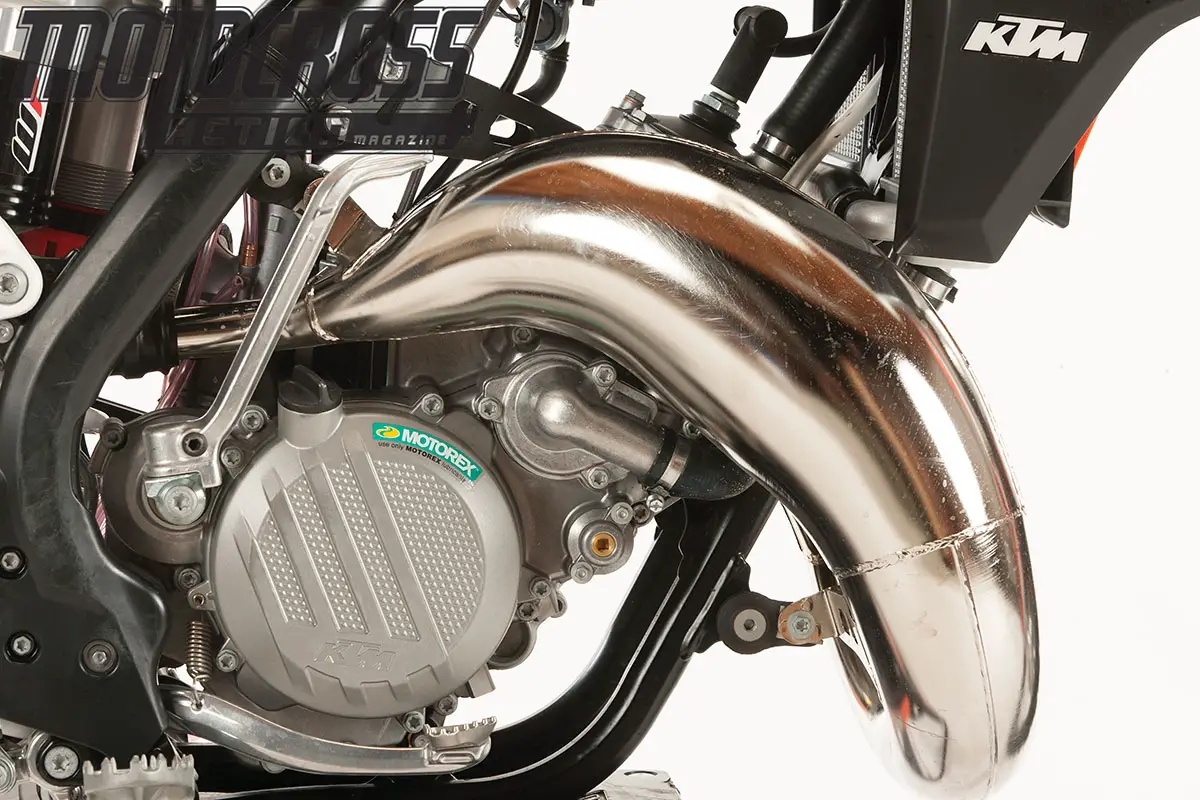
Q: HOW WAS THE STOCK GEARING?
A: Last year the majority of MXA’s test riders opted to go one tooth smaller on the rear—from a 50 to 49. This year, we lived with the 50-tooth rear sprocket.
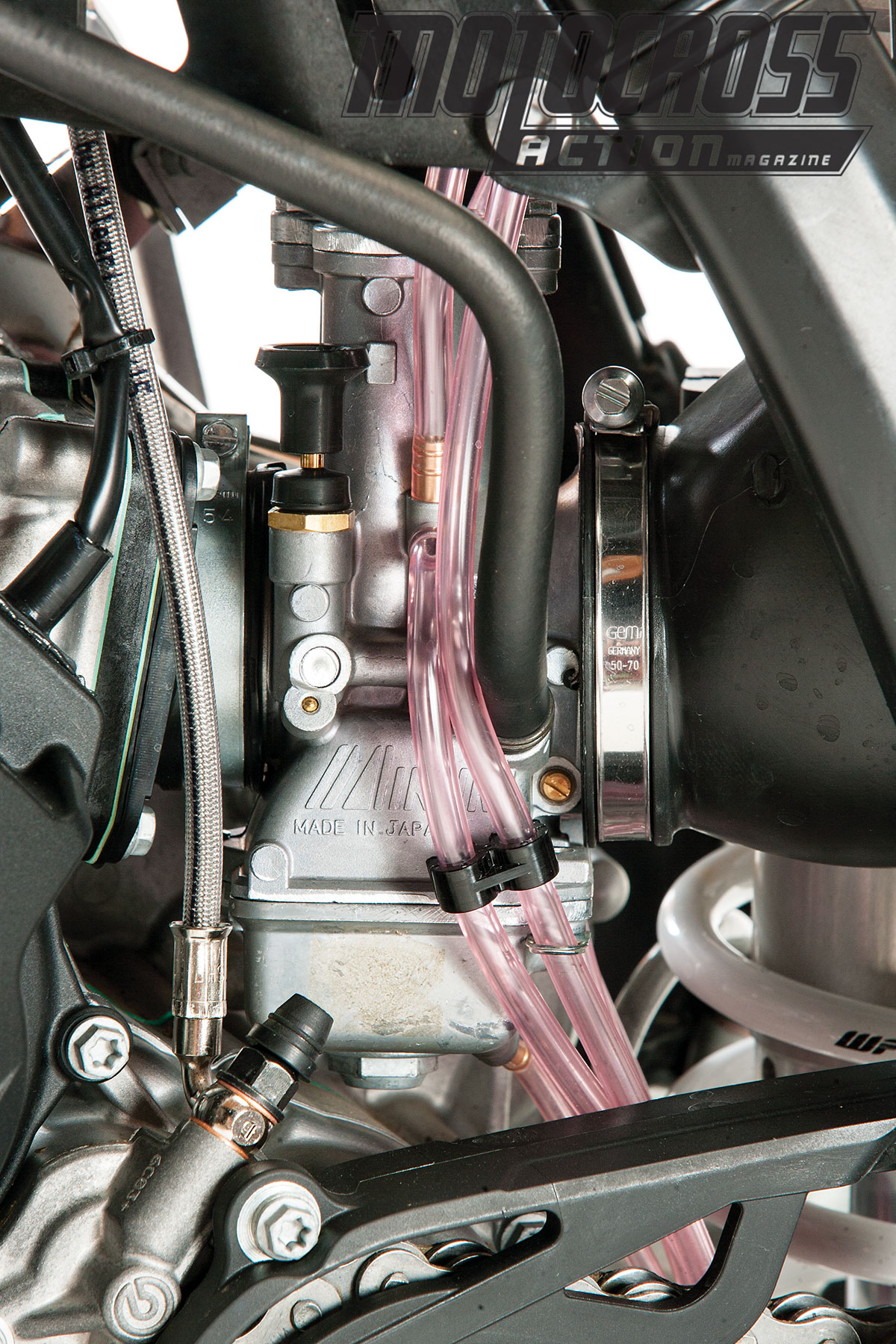
Q: WHAT DID WE HATE?
A: The hate list:
(1) Gas-cap vent hose. KTM’s vent hose gets twisted in a knot when you take it on and off to fill the tank. That is assuming that the cap doesn’t stick on so tight that it can’t be removed—in which case the vent hose won’t be twisted.
(2) Preload ring. The plastic preload ring needs to be beefed up. We never hit it with a punch, preferring to use a long, flat-bladed screwdriver as a pry bar against the frame.
(3) Power-valve adjuster. KTM’s power valve is adjusted with a Robertson wrench. Yeah, we don’t own one of those, either. We wedge a flat-bladed screwdriver into the slot to make spring-preload adjustments.
(4) Bleed screw. The air fork bleed screw is a size-20 Torx. Yeah, we don’t own one of those, either. We used a 10mm hex-head T-handle on the air fork side. A Phillips would be nice next year. The clutch side grip is held on by a #10 Torx. You guessed it, we don’t own one of those either.
(5) Wheels. The spokes never want to stay tight, especially the ones by the rim lock. We have better luck with the Husky’s D.I.D DirtStar wheels.
(6) Carburetor. The new Mikuni carb will work once yoi find the proper brass.. It needs to be better sorted off the assembly line in the future.
(7) Sprocket bolts. Never blindly believe that the rear sprocket bolts are tight. Always check them.
(8) Front brake hose. Be careful not to crimp the L-bend tube coming out of the front brake’s master cylinder when hooking tie-downs onto the bars. We would prefer more room between the brake line and the bars to lessen the chance of damage.
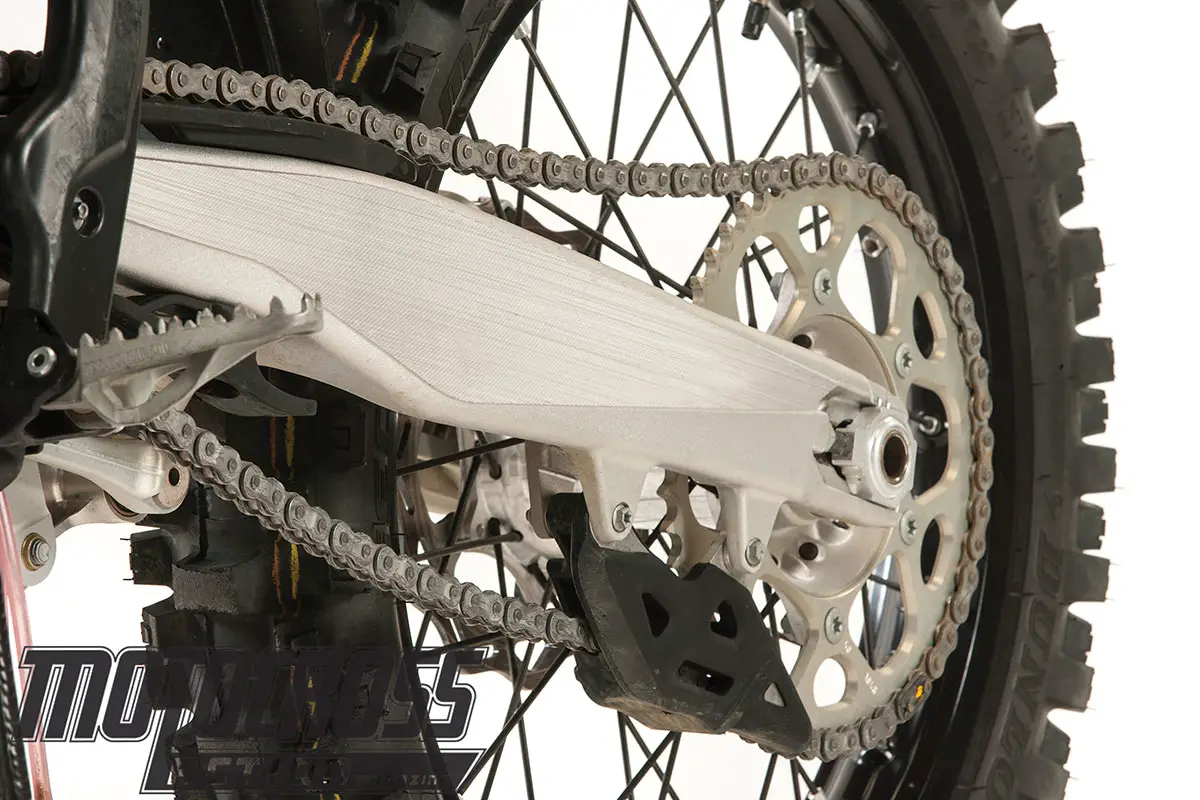
Q: WHAT DID WE LIKE?
A: The like list:
(1) Weight. The 2017 KTM 125SX is over four pounds lighter than last year due to new WP air forks and 28 pounds lighter than the typical 250 four-stroke.
(2) Brakes. They are still the best in the class.
(3) Hydraulic clutch. KTM’s self-adjusting clutch is ahead of its time. Actually, it is the proper clutch for its time—all the cable-actuated clutches are archaic.
(4) Airbox. We don’t think changing an air filter can get any simpler.
(5) Sag line. There is a sag-line indicator embossed into the rear fender to ensure that you measure from the exact same spot every time.
(6) Forks. We love the WP AER forks. They are simple, light, understandable, easy to use and very good.
(7) Tires. The 125SX comes with our favorite tires—Dunlop Geomax MXS3s front and rear.

Q: WHAT DO WE REALLY THINK?
A: Last year the KTM 125SX was almost a perfect 125 two-stroke. It had power, weight, ergos and accoutrements. What it didn’t have were forks that lived up to the rest of the package. Now, thanks to the addition of 48mm AER air forks, the package is complete. Let’s not underestimate KTM’s contribution to the sport. KTM’s willingness to invest R&D money into two-stroke development not only helps KTM’s bottom line but helps the sport grow by adding options for consumers. The 2017 KTM 125SX is a powerful bike that meets not only the needs of the entry-level market, but is competitive enough to push the racing envelope.
MXA’S KTM 125SX SETUP SPECS
This is how we set up our 2017 KTM 125SX for racing. We offer it as a guide to help you find your own sweet spot.
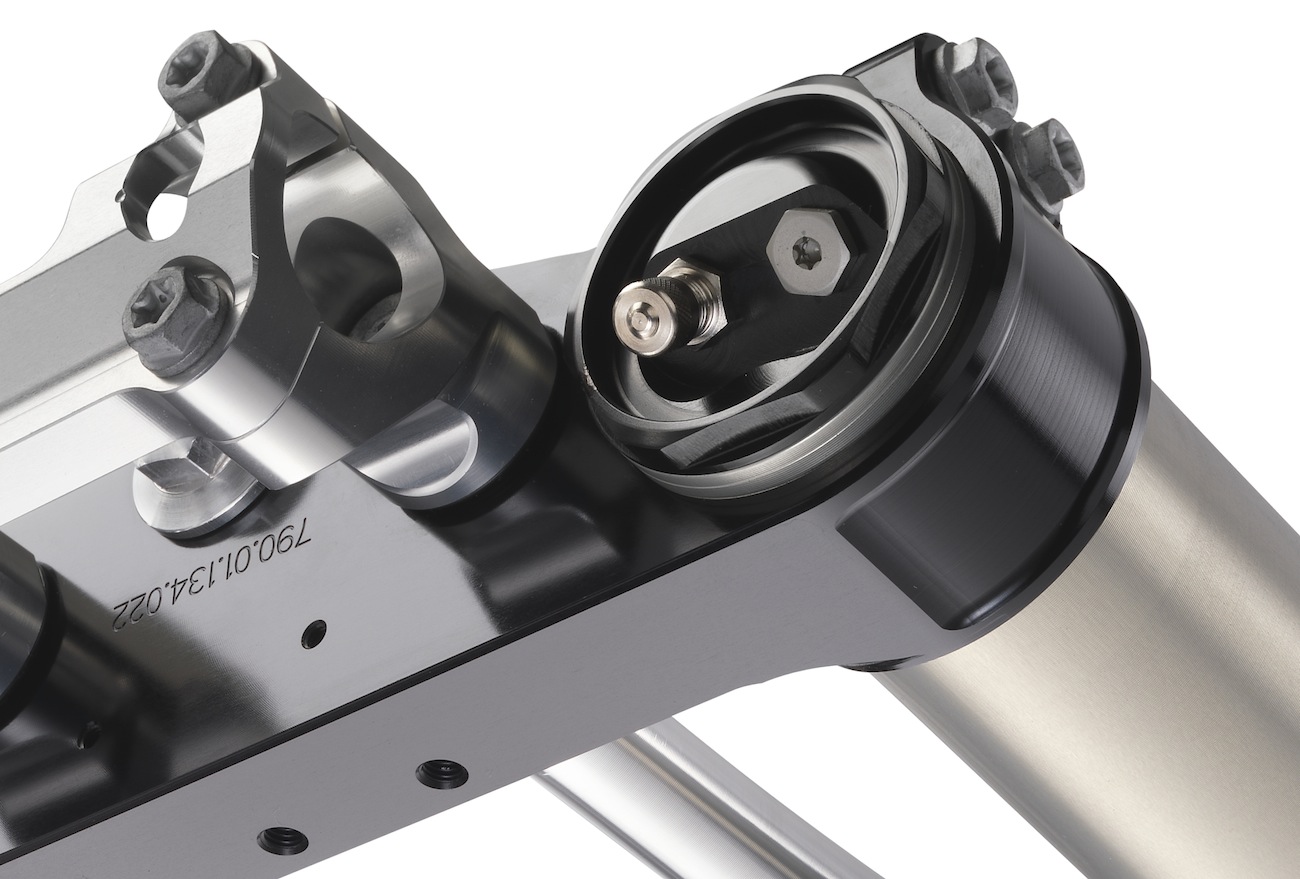
WP AER FORK SETTINGS
First, focus on balancing out the bike for your weight by adjusting the air pressure in the forks. If the forks are diving into the corners, go up a few psi. If they tend to be rigid and push out on the entrance of corners, drop the psi down a few points. For riders between 155–170 pounds, we ran 123 psi. Riders 170 to 200 pounds favored 125 psi. Once the pressure was set, all the riders went softer on the compression. The forks have good bottoming resistance, so going softer for a plusher ride was not an issue. For hardcore racing we recommend this fork setup for the 2017 KTM 125SX (stock settings in parentheses):
Air pressure: 123 psi
Compression: 22 clicks out (12 clicks out)
Rebound: 11 clicks out (12 clicks out)
Fork-leg height: Stock
Notes: Checking the WP AER forks’ air pressure each and every time you hit the track. It can gain as much as 4 psi during a race. Be sure to bleed both of the air screws on the top of the forks.
WP SHOCK SETTINGS
KTM’s rear shock has always been hampered by the performance of the front forks. When the forks don’t work, the load is immediately transferred to the rear shock. Now that the KTM has good forks for 2017, the rear shock doesn’t have to absorb all the energy. For 2017, every KTM motocross model got a lighter shock spring rate. The 450SXF gets a 45 N/m spring. The 350SXF, 250SXF and 250SX two-strokes will come with 42 N/m springs, and the 125SX and 150SX are spec’ed with 39 N/m springs. For hardcore racing we recommend this shock setup on the 2017 KTM 125SX (stock specs are in parentheses):
Spring rate: 39 N/m
Race sag: 105mm (110mm)
Hi-compression: 2-1/2 turns out (2 turns out)
Lo-compression: 8 turns out (15 turns out)
Rebound: 15 turns out
Notes: The stock shock settings are in the ballpark.
MIKUNI TMX 38MM JETTING SPECS
Here’s what we ran in our 38mm TMX (stock settings in parentheses):
Main jet: 480
Pilot: 25 (45)
Needle: 6BFY43-74
Clip: 3rd
Air screw: 1 turn out (1-1/2 turns out)


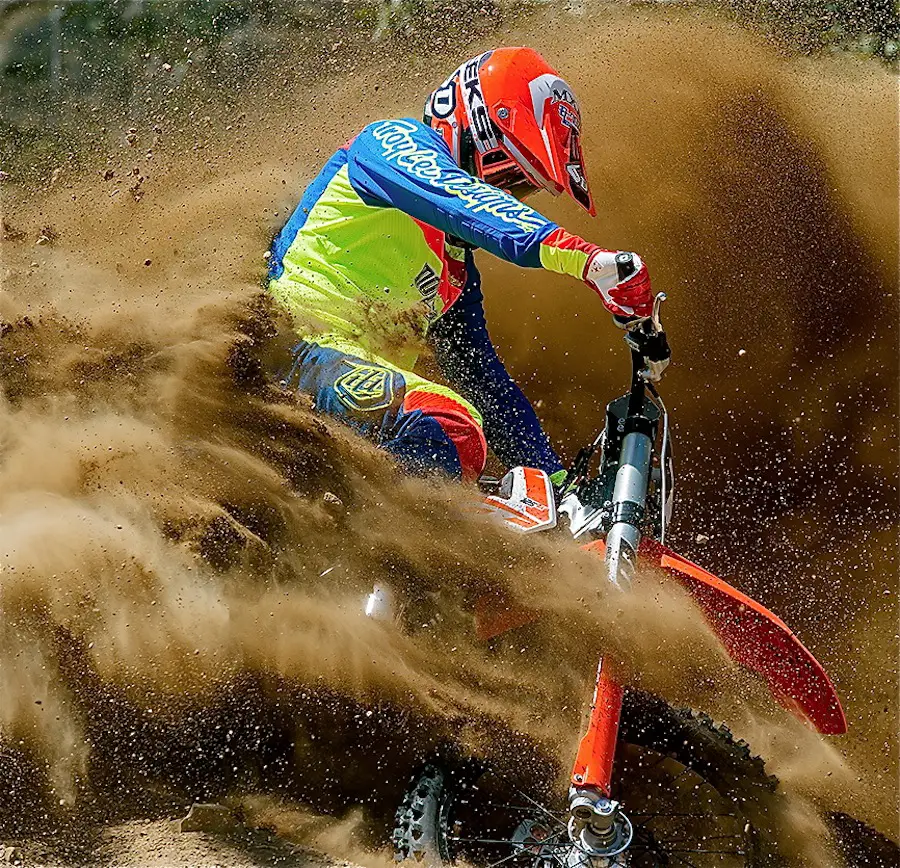
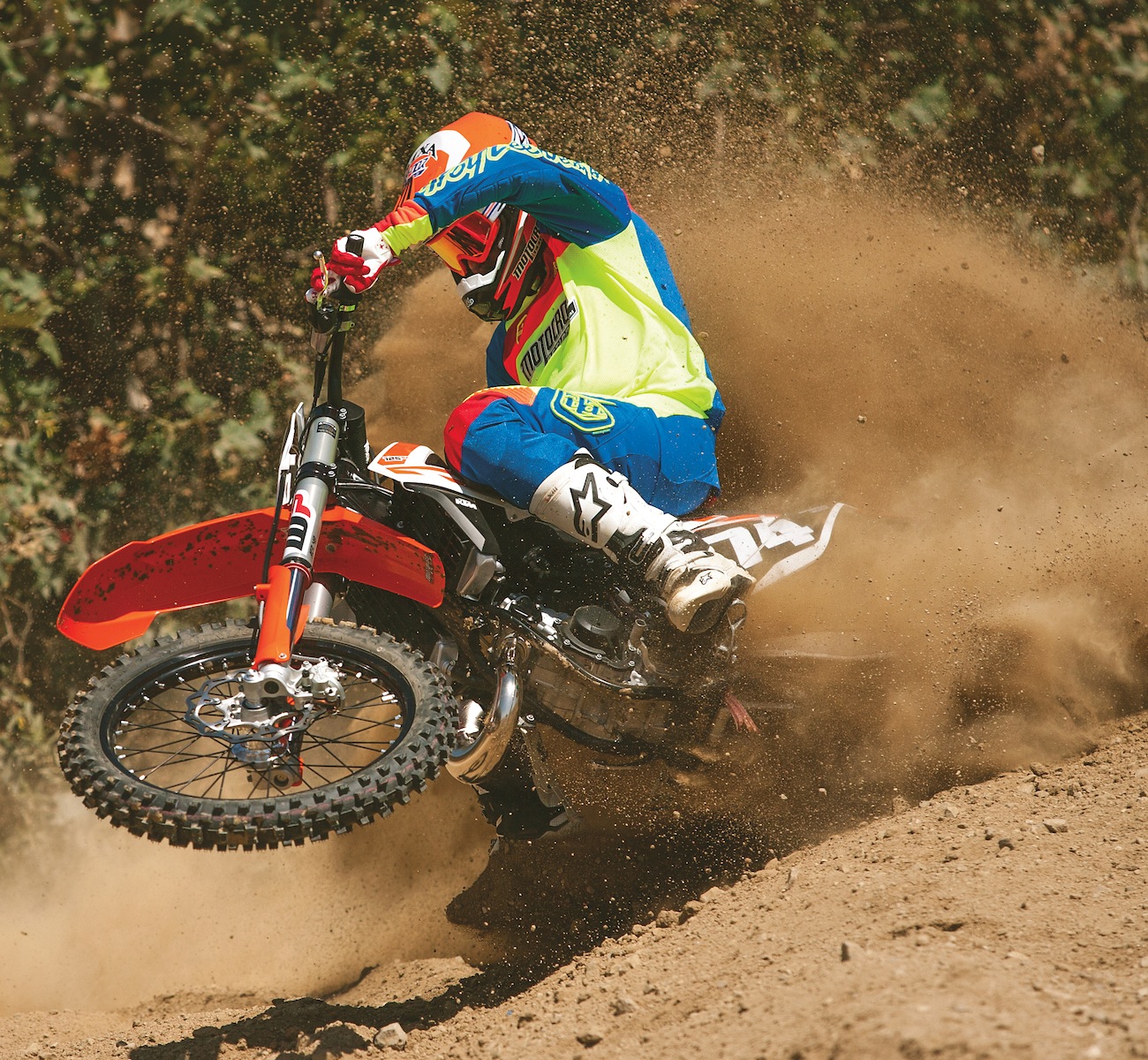
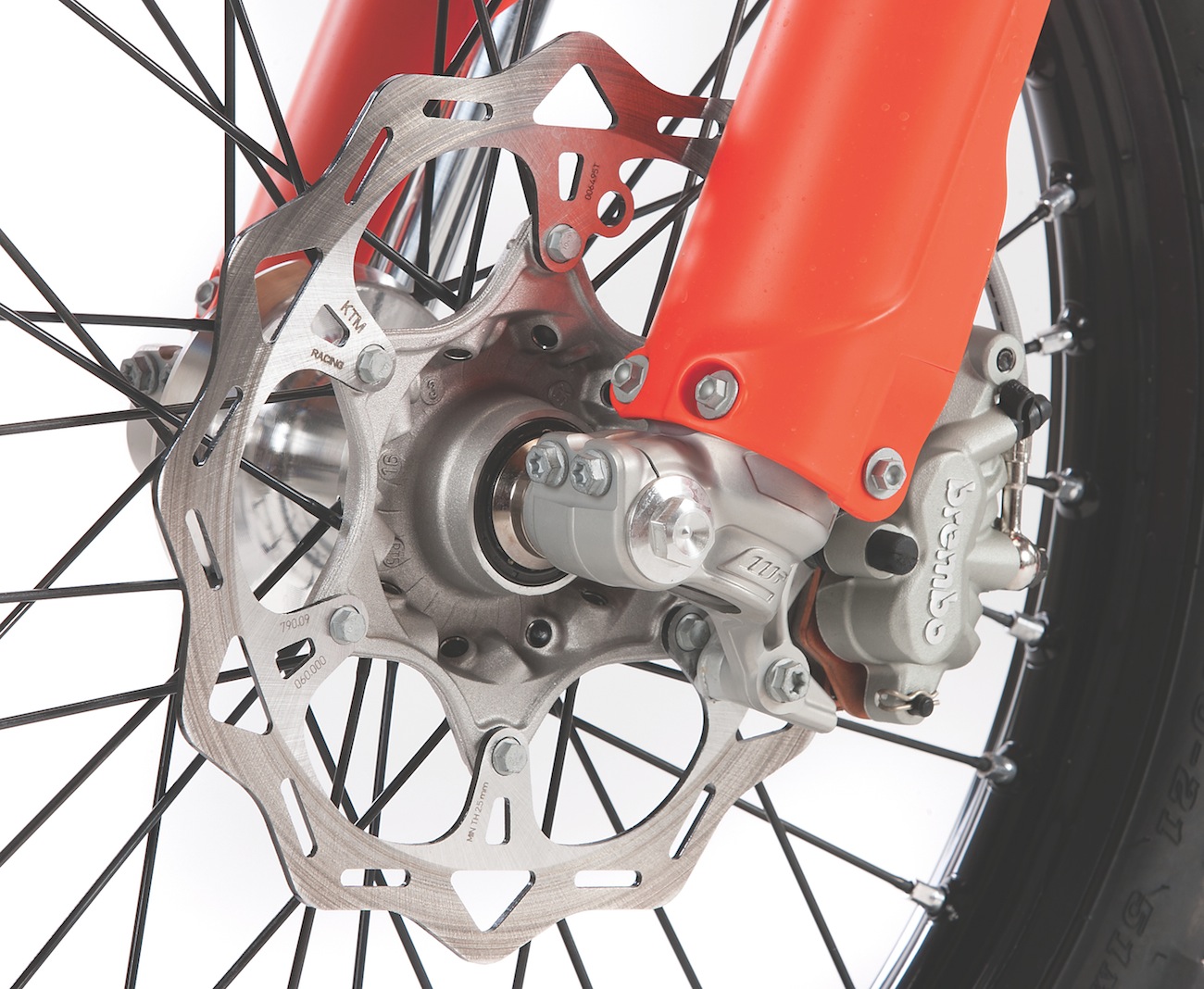
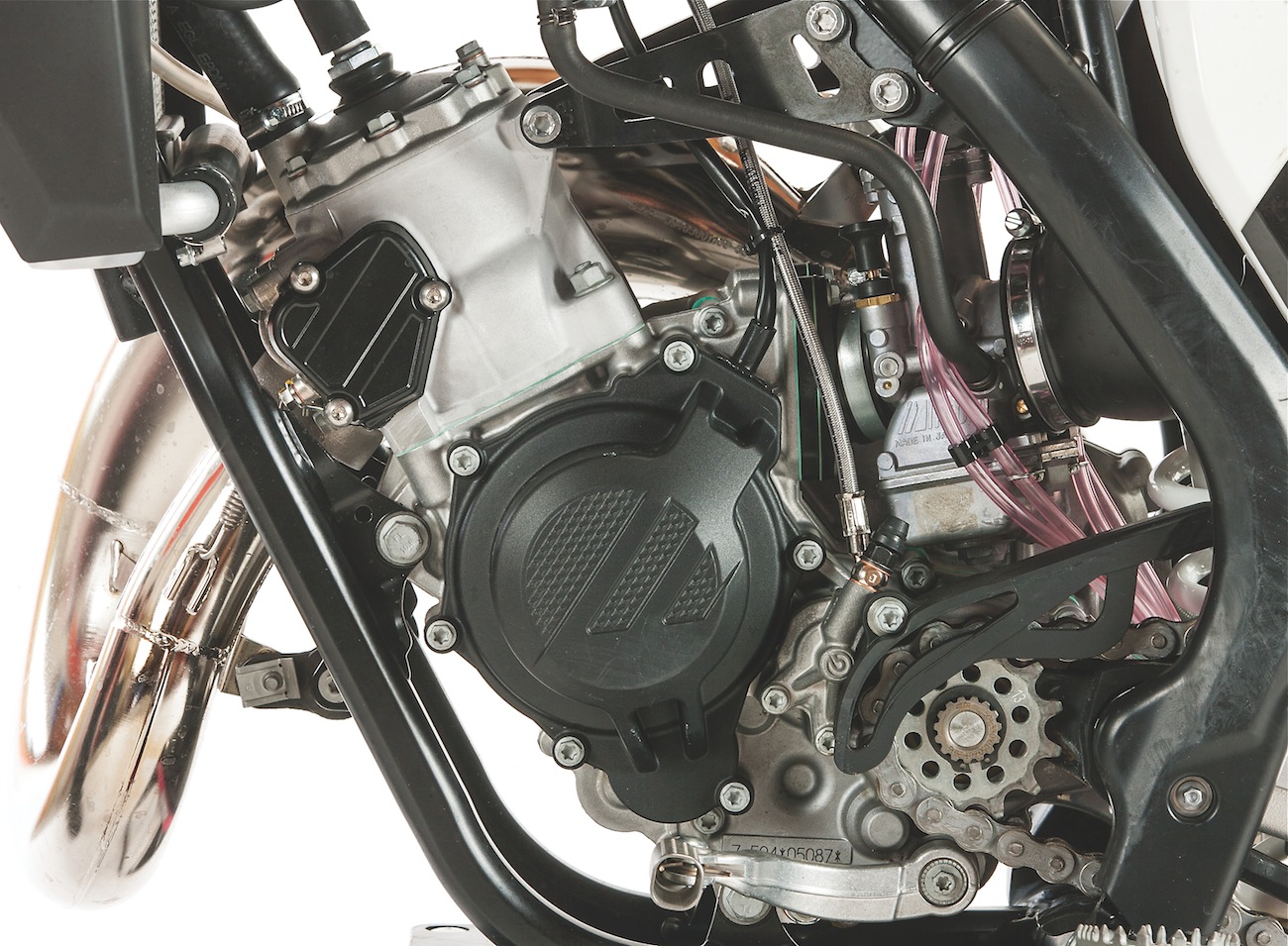
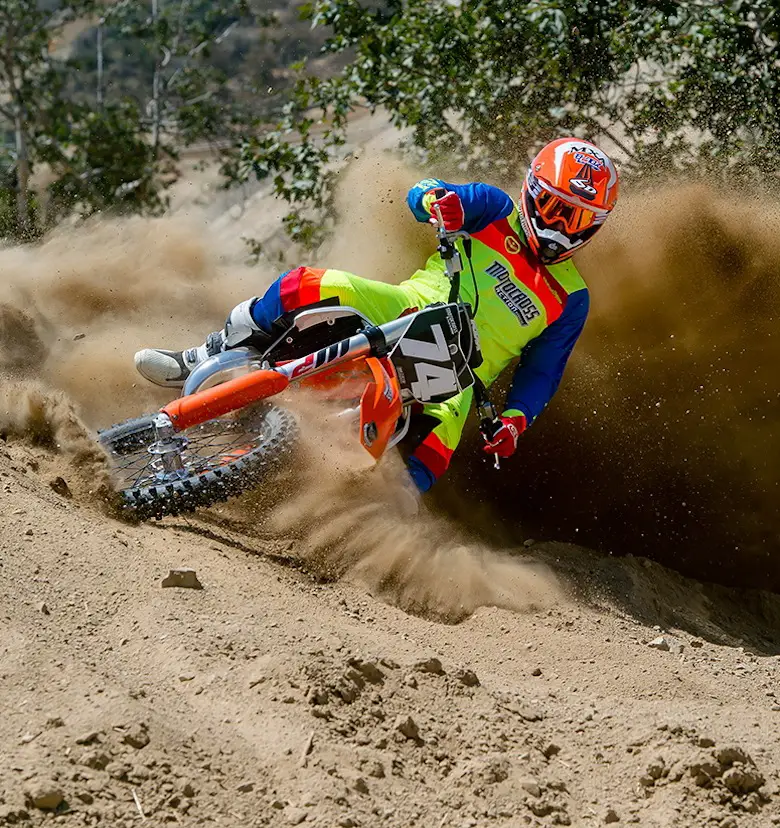






Comments are closed.